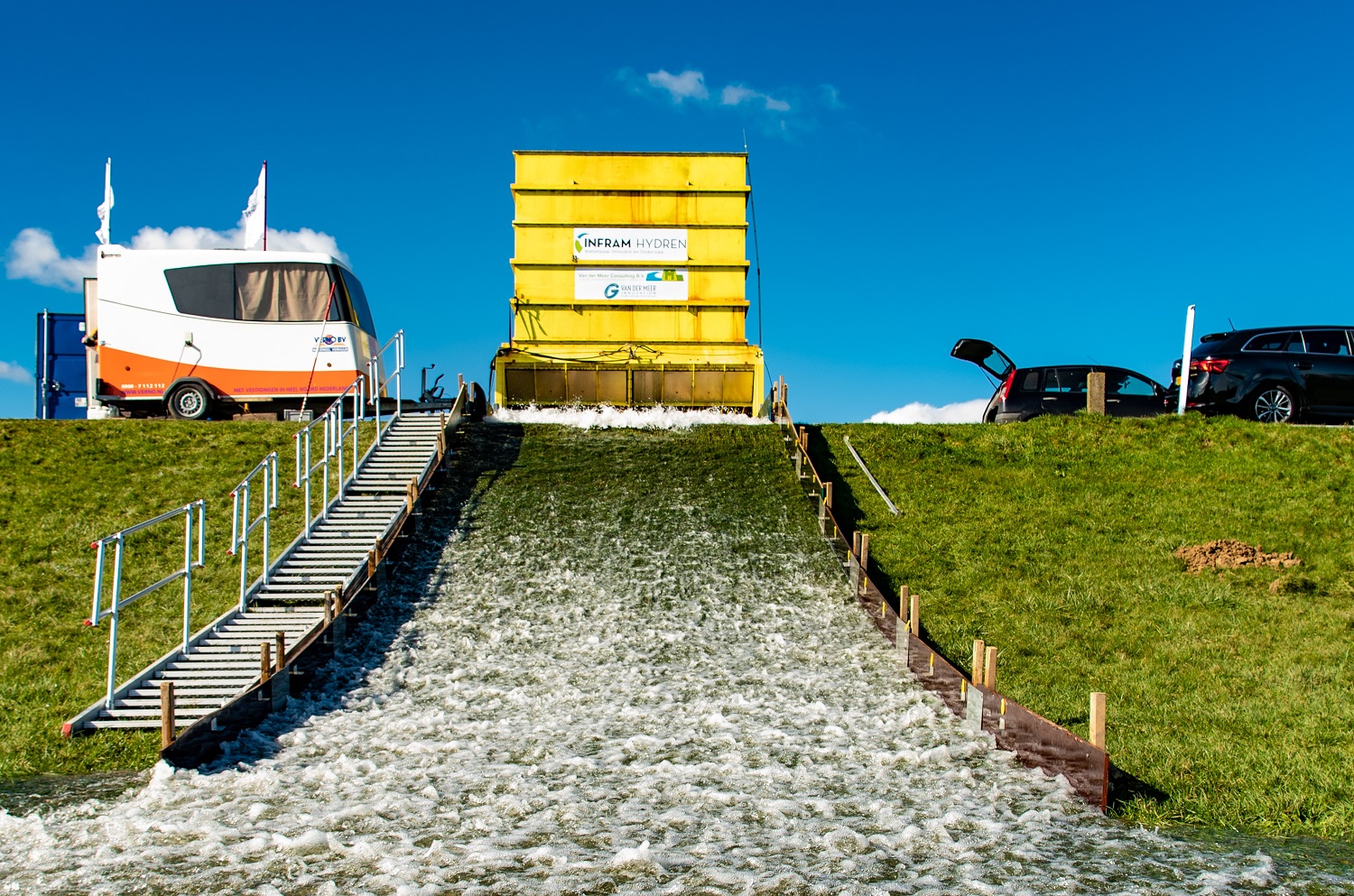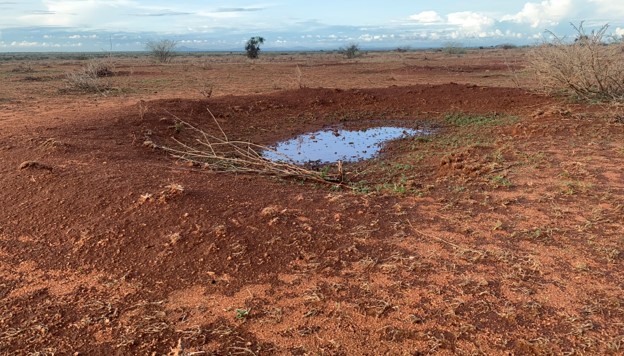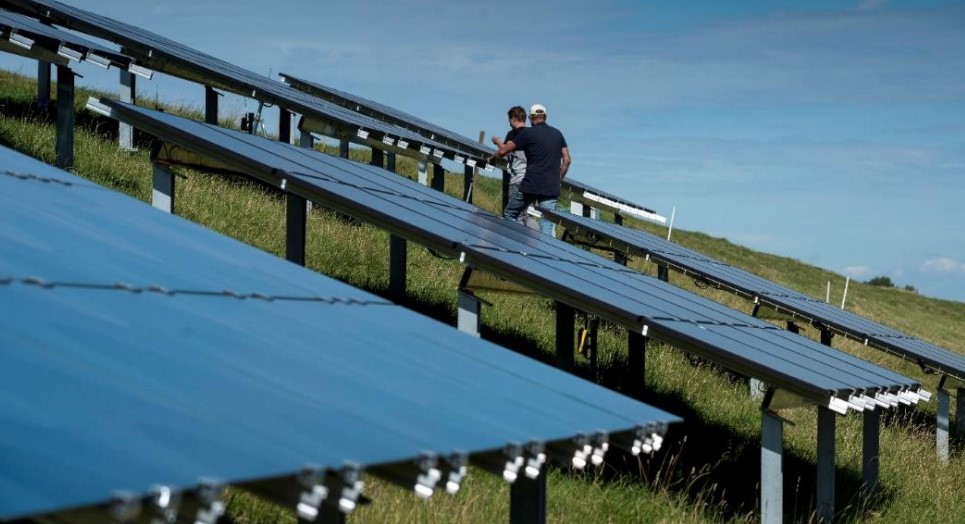On the Maasbandijk near Wijchen (Balgoij, to be more precise), a storm has been raging for a week now. Water from the Maas washes over the dyke. Still, the dyke has so far taken no damage, says WUR vegetation expert Nils van Rooijen. Moreover, the wave is extremely local and fake to boot. A wave simulator mimics a spring storm.
Van Rooijen has been scourging flowery dykes with waves for several weeks now. The experiments are part of the Future Dikes project by the Rivierenland Water Authority. The dykes of the future are to be fortified to withstand the impact of an increasingly warm climate. Raising the dykes is expensive; planting specific vegetation may be a much smarter and cheaper solution.
Erosion
Many dykes in the Netherlands are covered in grass. But grass roots do not reach nearly as deeply as the roots of plants. Future Dikes investigates what vegetation is best suited to protect against erosion. And that is best tested in practice. Thus, waves of water from the Maas wash over the dyke at Balgoij for days on end, which Van Rooijen claims is one of the most flowery dykes in the Netherlands.
We hope it will fail because we are looking for the critical point
Nils van Rooijen, researcher at Wageningen Environmental Research
The flowers are currently invisible, as it is winter. ‘But in the summer, the dyke is covered in a sea of purple’, Van Rooijen says. ‘We are testing the dyke now rather than in the summer because this is the stormy season, and that is precisely when the dyke is expected to do its job.’ It is not about the flowers but about their roots. And the roots are there throughout the year.
Good news
Each wave tosses 18,000 litres of Maas water down the embankment. ‘Some 25 million litres of water in four days’, according to Van Rooijen. ‘And the dyke is not budging. Unlike other dykes that we have seen.’ From a safety perspective, the dyke’s strength is good news. But for the experiment, not so much. ‘We hope it will fail because we are looking for the critical point where damage occurs. Today is our last day of measurements. There is still a chance.’

 A wave of water from the Maas washes over the dyke. Photo Nils van Rooijen
A wave of water from the Maas washes over the dyke. Photo Nils van Rooijen 
